At a time when most science fiction movies had to get by with small budgets and cheesy effects, Forbidden Planet was a spectacular, effects-filled, big-budget exception. Set in a distant corner of the universe, a crew from Earth must learn why one member of a planetary expedition was not gruesomely killed twenty years ago—like the rest of his team. As they press him for answers, they are pulled into the planet’s mysterious past and we discover that the human soul is not the only entity with hidden and malevolent impulses.
The lone survivor of the original expedition uses his unnaturally superior intellect to carve out an idyllic existence for himself and his daughter—who was born on the planet and is now nineteen-years-old. In the midst of this barren environment, they live in a stunning open-air home of the future, complete with a garden, wild deer and tigers, and a powerful mechanical servant–the famous ‘Robby the Robot.’ However, as his confident and naïve daughter steps out of the pool, naked, and into the arms of the visiting ship’s captain, the balance of this artificially created world begins to crumble and a raging monster from twenty years ago is awakened.
Even though it is a child of the 50s—and it does reflect the gender roles and obligatory comic relief of the era—Forbidden Planet has a rich story that was adapted from William Shakespeare’s The Tempest. You don’t have to scratch far below the surface for the visceral themes of betrayal, jealously and the human craving for power.
The film is packed with technical achievements that were amazing in its day, and it was nominated for an Oscar for Best Special Effects. Perhaps its most popular legacy was ‘Robby the Robot,’ which was built by a crew of capable engineers (some of whom had been poached from the aerospace industry). ‘Robby’ was the first onscreen robot to explicitly obey Isaac Asimov’s Laws of Robotics, which guarantee that it cannot harm humans. The robot was an instant hit with the public and eventually earned its $125,000 price tag by appearing in over twenty TV shows and movies—and starring in a 1957 B-movie titled The Invisible Boy.
Forbidden Planet also has an extraordinary all-electronic score that features no musical instruments. This was a huge risk at the time, but it paid off, creating an alien and almost subliminal soundtrack—in a preview of the film, the audience broke out into spontaneous applause when they heard the sounds of the spaceship landing on the planet. The success of the film’s score is often credited with setting the stage for the rise of electronic music, and it certainly made significant technical progress towards the yet-to-be invented music synthesizer.
Forbidden Planet did so well in audience previews that no changes were made. It premiered at Hollywood’s Grauman’s Chinese Theater and ran every day for five months, earning around $3 million at the box office. It was a popular film, but fell short of being a blockbuster due, in part, to how expensive it was to make. However, it had a tremendous impact on the science fiction genre and in 2013 it was selected for preservation by the National Film Registry. The TV series, Lost in Space, featured a robot from the same designer who created ‘Robby the Robot,’ and Gene Roddenberry was deeply influenced by Forbidden Planet when he created the original 1960s TV series, Star Trek.
Enjoying the site? If so consider supporting it with alien-infused caffeine…
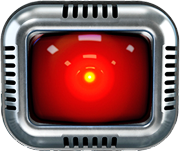

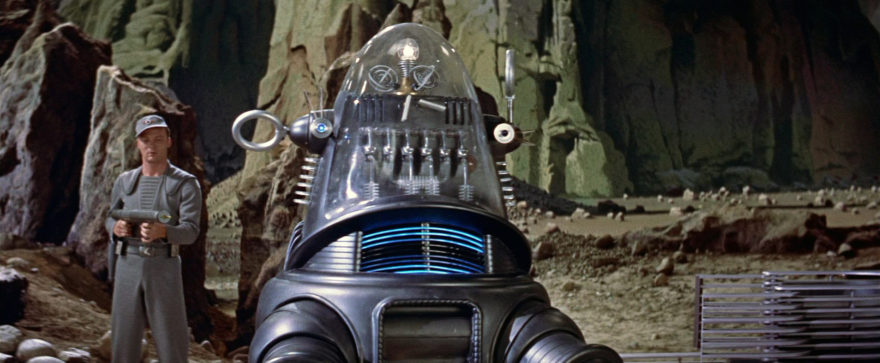
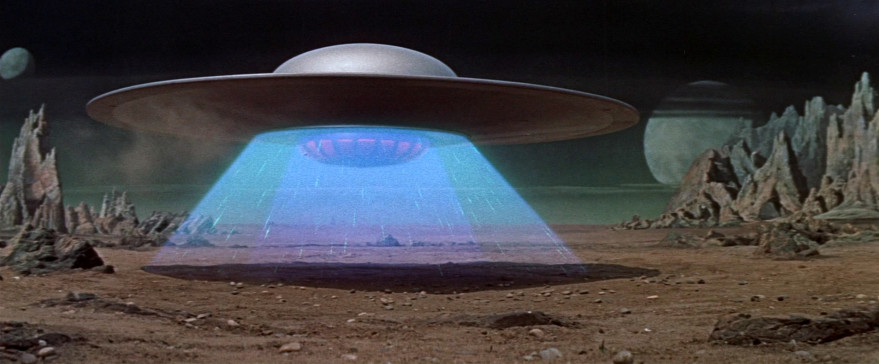
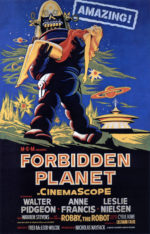
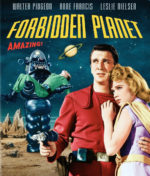
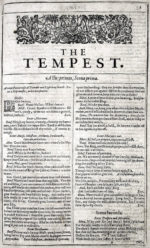
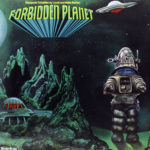
One of the most underappreciated sci-fi films of all time1
Pingback: MGM In Space – Taking Up Room